News
Fish now a luxury item on family menus
A meal of fish and rice has become a luxury for the average Sri Lankan family eager to maintain a diet rich in animal protein.
Diesel for fishing vessels is now more costlier and so is fishing gear, largely imported. These rising costs for the fishing industry mean, the catch brought ashore is limited and prices keep rising at the wet markets and in supermarkets.
“We are waiting for the new government to look into our plight. The fuel price increase and the shortage of diesel are frustrating. Many are not going out to sea,” complains Dinesh Suranjan Fernando, the secretary of the All Ceylon Fisher Folk Trade Union. 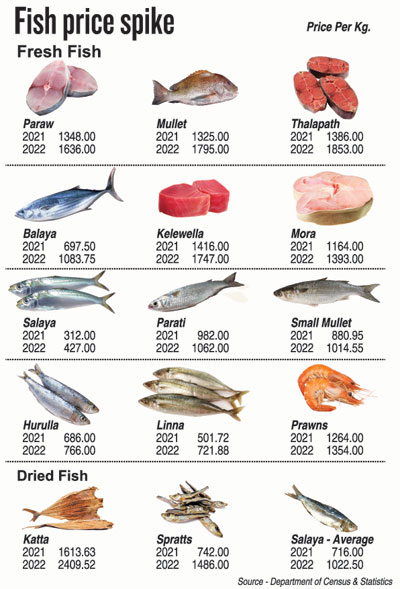
Mr. Fernando said the state-run Ceylon Fisheries Corporation should buy more and strengthen distribution.
S.L. Manawadu from the Beruwala fisheries harbour, said trawlers will not set sail on 30-40 day deep sea fishing trips considering the costs.
“Out of 800 registered multi-day trawlers, only about 100 have gone out to sea. We want the government to take this issue seriously and make diesel available. People who go fishing for 30 days, now go for 15 days. A 40 day multi-day trawler needs Rs.1.4 million worth of fuel,” he said.
Another fisherman said: “We spend days waiting for diesel and then leave disappointed. Some pay a higher price to get diesel. So the catch needs to bring in more value. Even the cheapest saalaya (sardine) is sold for Rs. 90 a kilo is now Rs. 300.’’
The rise in prices of fishing equipment adds to the landed cost of fish.
“Fishing nets that were Rs. 65,000 earlier now cost Rs. 120,000. Outboard engines that were sold for Rs. 250,000 each are now Rs.500,000. Most of the equipment is imported from Thailand, India and Taiwan,’’ a fisherman said.
According to Department of Fisheries statistics the annual marine fish production is 415,490 metric tons. The country has a marine fleet of 48,976 including 4,885 multi-day trawlers. With 64,000 marine fishing households, 2.7 million people depend on fishing and related livelihood in the country.
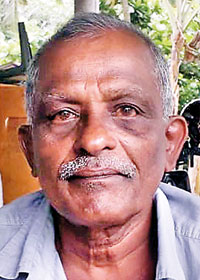
S.L. Manawadu from the Beruwala fisheries harbour
The price of deep sea fish such as snapper, tuna, seer fish (thora), paraw, thalapath (sailfish) continue to soar. A kilo costs Rs.1,700 to Rs 2,200 in the wet market. In supermarkets, the price range is Rs. 2,300 to Rs 3,000 per kilo.
Some families say they buy the costlier fish for special occasions, while resorting to Indian mackerel, linna or saalaya for a daily meal.
“Fish is presently a luxury food for many. Even the prices of kumbalaawa (Indian mackerel), bolla and balaya (skipjack tuna) have increased. Sprats are too costly. The same is with canned fish. Soya and egg have replaced fish as people are struggling with the price increases of other staples,” said K. Samaraweera, a housewife from Boralesgamuwa.
A kilo of sprats that was Rs. 720 last year is now sold for Rs. 1,400. The price of dried dish, katta, has increased from Rs. 1,601 per/kg to Rs. 2,370.
(Additional reporting and pix by Thusitha de Silva and Rekha Tharangani)
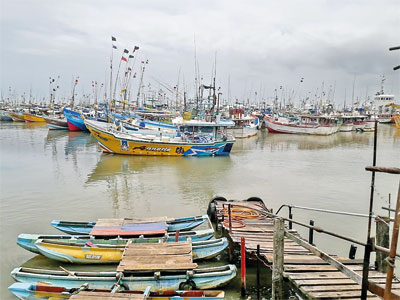

Multi-day trawlers at Beruwala (top) and Ratmalana (above): No fuel to go out to sea
| Kerosene catch 22 By Hiran Priyankara Jayasinghe The secretary of Marawila fisheries society, Prasad Kumara said: “With a limited catch, we cannot control the increase in fish prices.’’ 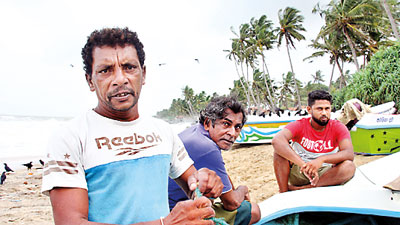 Fisherman Nimal Fernando | |
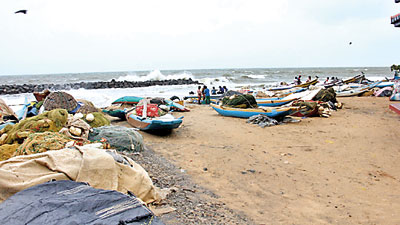 |
The best way to say that you found the home of your dreams is by finding it on Hitad.lk. We have listings for apartments for sale or rent in Sri Lanka, no matter what locale you're looking for! Whether you live in Colombo, Galle, Kandy, Matara, Jaffna and more - we've got them all!

